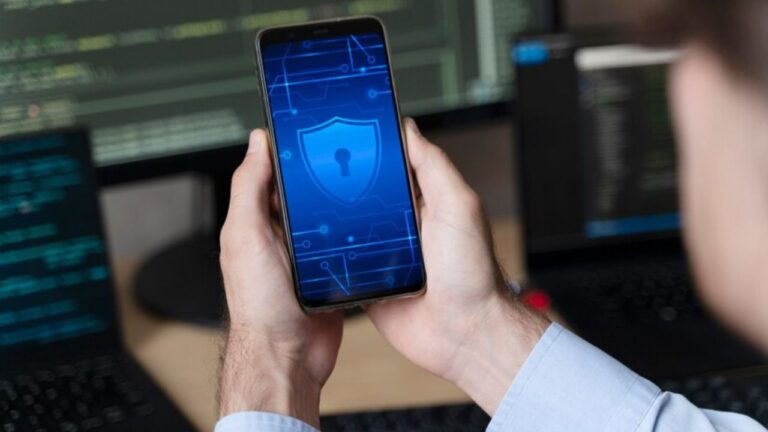In the digital age, security is everything. A single vulnerability can expose sensitive data, leading to dire consequences for users and organizations alike. One common issue that iPhone users might stumble upon is the dreaded “iPhone cannot verify server identity” message. But what does it mean? And how can you resolve it to ensure your data remains protected? This blog post will shed light on why this message appears, the potential risks if ignored, and steps to overcome it.
Understanding Iphone cannot verify server identity securely
When you connect your Iphone cannot verify server identity securely, whether browsing a website or checking your email, it communicates with servers. These servers must prove their authenticity to ensure secure communication. This process is called server identity verification. It involves using digital certificates, which assure your device that the server is trustworthy. Without this verification, your iPhone won’t be able to establish a secure connection.
The Role of Digital Certificates
Digital certificates function like a server’s ID card. They contain important information such as the server’s public key and the organization it’s associated with. When your iPhone receives a digital certificate, it checks whether it’s from a trusted source. If the certificate is invalid or expired, your device raises the alarm, resulting in the “iPhone cannot verify server identity” error.
Common Causes of the Error
Several factors can trigger the server identity error. Often, it’s due to an expired or misconfigured certificate. In other cases, the server’s domain name might not match the one specified in the certificate. Even incorrect date and time settings on your iPhone can lead to this error. Knowing these causes will help you diagnose and fix the problem, ensuring seamless online interactions.
How SSL/TLS Certificates Work
SSL (Secure Socket Layer) and TLS (Transport Layer Security) certificates are crucial for encrypted communication between your iPhone and servers. They enable secure data transfer by encrypting information to protect it from unauthorized access. These certificates must be regularly updated to keep up with evolving security standards. When a certificate fails to meet these standards, your iPhone issues a warning.
Impact of Expired Certificates
An expired certificate can compromise your security. When your iPhone encounters one, it refrains from establishing a secure connection, prompting the server identity error. Although ignoring the warning might seem convenient, it exposes your data to potential threats. Always prioritize updating certificates to ensure your information remains safe.
Misconfigured Server Settings
Another reason for the server identity error is server misconfiguration. If the server’s settings don’t align with the certificate details, your iPhone won’t recognize it as secure. Whether it’s due to an incorrect domain name or mismatched security settings, resolving these issues requires server administrators to rectify the configuration.
Addressing Date and Time Discrepancies
Your iPhone relies on accurate date and time settings for server verification. If these settings are off, certificate validation may fail, leading to the server identity error. Ensure your device’s date and time are set correctly, preferably configured to update automatically, to avoid this common issue.
Ensuring Secure Email Communications
The server identity error often rears its head when accessing email accounts. This occurs because email servers, like all others, require valid certificates. If your email provider’s certificate is faulty, you’ll face the error message. Verify your email settings and contact your provider for assistance if needed.
The Risk of Ignoring Warnings
While dismissing the server identity error may seem harmless, it poses a significant risk. Ignoring it exposes your data to potential breaches and threats. Hackers can intercept unencrypted data, leading to identity theft or financial loss. Always address the warning promptly to safeguard your information.
Steps to Resolve the Issue
To fix the server identity error, start by checking your internet connection. Ensure your date and time settings are accurate. Next, verify your email and server configurations. If the issue persists, consider reinstalling your email app or contacting the service provider. Regularly updating your iPhone’s software is also crucial for maintaining security.
Importance of Regular Software Updates
Apple frequently releases updates to address security vulnerabilities. Keeping your iPhone’s software up to date ensures you have the latest security patches and protections. Regular updates minimize the risk of encountering server identity errors and enhance your device’s overall performance.
Seeking Professional Assistance
If you’re unable to resolve the server identity error, consider seeking professional assistance. Contact Apple Support or your email provider for guidance tailored to your specific situation. Professionals can help identify underlying issues and provide effective solutions, ensuring your data remains protected.
Conclusion
The “iPhone cannot verify server identity” message may seem inconvenient, but it’s a crucial aspect of maintaining secure online interactions. By understanding its causes and following the recommended steps, you can quickly resolve the issue while safeguarding your information. Remember, digital security is an ongoing commitment—stay proactive, keep your software up to date, and don’t hesitate to seek help when needed. Together, we can make the digital world a safer place.
